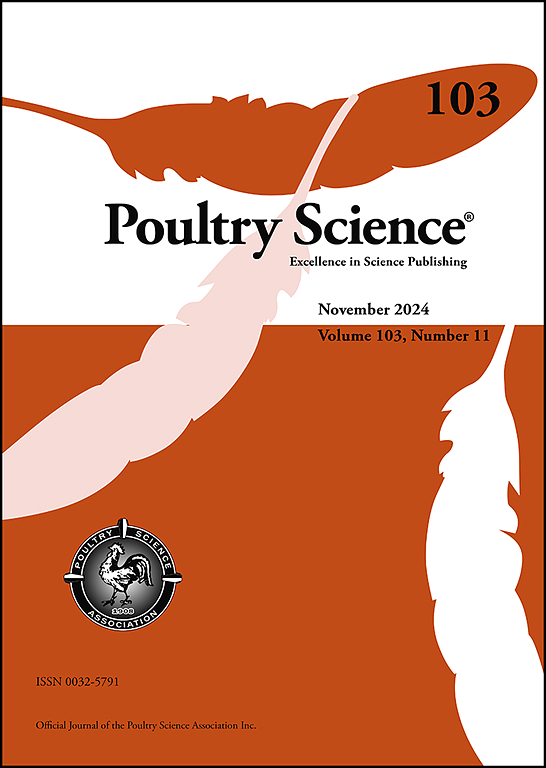A dynamic study on serum biomarkers and kidney injury in a gosling model of hyperuricemia
IF 3.8
1区 农林科学
Q1 AGRICULTURE, DAIRY & ANIMAL SCIENCE
引用次数: 0
Abstract
Hyperuricemia, a metabolic disorder characterized by elevated serum uric acid levels, poses significant challenges to poultry health and productivity. This study aimed to establish a hyperuricemia model in goslings through a multi-factorial induction approach using a high-purine, high-protein, and high-calcium diet, to investigate its dynamic progression, serological markers, and renal pathology. A total of 160 male Sanhua goslings were randomly assigned to control and model groups and fed either a basal diet or a high-purine, high-protein, and high-calcium diet for 18 days.
Key findings revealed significant elevations in serum uric acid, creatinine, and urea nitrogen levels in the model group from day 5 onward, peaking on day 13 (p < 0.01). Activities of xanthine oxidase and adenosine deaminase were consistently higher in the model group, indicating enhanced purine metabolism and oxidative stress. Histopathological analysis showed progressive renal damage, including tubular degeneration, interstitial fibrosis, and glomerular injury, becoming evident by day 7 and severe by day 13. Ultrastructural examination further revealed mitochondrial dysfunction, podocyte effacement, and basement membrane disruption in the model group. Behavioral abnormalities, such as reduced mobility and the "shrinking neck" phenomenon, were observed from day 9, reflecting systemic disease severity.
The dynamic expression of fibrosis-related markers, including Col-1, Col-3, and α-SMA, demonstrated the progression of renal fibrosis and extracellular matrix remodeling. These findings identify biomarkers for hyperuricemia progression and suggest potential therapeutic targets. This study establishes a comprehensive framework for understanding hyperuricemia-associated renal pathology and lays the groundwork for developing strategies to mitigate its impact on poultry health and productivity.
求助全文
约1分钟内获得全文
求助全文
来源期刊

Poultry Science
农林科学-奶制品与动物科学
CiteScore
7.60
自引率
15.90%
发文量
0
审稿时长
94 days
期刊介绍:
First self-published in 1921, Poultry Science is an internationally renowned monthly journal, known as the authoritative source for a broad range of poultry information and high-caliber research. The journal plays a pivotal role in the dissemination of preeminent poultry-related knowledge across all disciplines. As of January 2020, Poultry Science will become an Open Access journal with no subscription charges, meaning authors who publish here can make their research immediately, permanently, and freely accessible worldwide while retaining copyright to their work. Papers submitted for publication after October 1, 2019 will be published as Open Access papers.
An international journal, Poultry Science publishes original papers, research notes, symposium papers, and reviews of basic science as applied to poultry. This authoritative source of poultry information is consistently ranked by ISI Impact Factor as one of the top 10 agriculture, dairy and animal science journals to deliver high-caliber research. Currently it is the highest-ranked (by Impact Factor and Eigenfactor) journal dedicated to publishing poultry research. Subject areas include breeding, genetics, education, production, management, environment, health, behavior, welfare, immunology, molecular biology, metabolism, nutrition, physiology, reproduction, processing, and products.
 求助内容:
求助内容: 应助结果提醒方式:
应助结果提醒方式:


